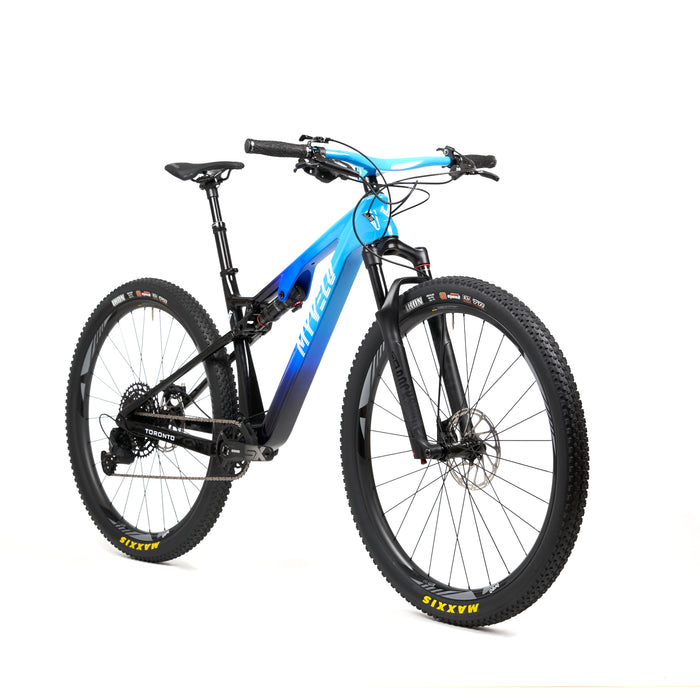
Toronto Fully MTB
incl. FREE shipping & free returns

Von Lukas Vogt |
3 minutes read time

In this article you will learn everything you need to know about hardtails and fullys so you can make the perfect decision.

A hardtail mountain bike only has suspension at the front, in the suspension fork. The frame is rigid, which makes the bike lighter overall and requires less maintenance.
Advantages of a hardtail:
Who is a hardtail suitable for?
If you spend a lot of time on paved trails, forest roads or moderate terrain, a hardtail is a great choice. It is also often the best way to get started for beginners who want to get into mountain biking.
A fully is a mountain bike with suspension at the front and rear. The rear frame usually has a shock absorber that absorbs shocks and impacts. This offers significantly more comfort and control, especially on challenging terrain.
Advantages of a fully:
Who is a fully suitable for?
Full suspension bikes are ideal for riders who spend a lot of time on challenging terrain, such as single trails or in the bike park. If you love the thrill of downhill rides or are regularly looking for technical challenges, the full suspension bike is just right for you.
| feature | hardtail | Fully |
|---|---|---|
| Weight | Lighter | Heavy |
| Price | Cheaper | More expensive |
| maintenance | Simply | More complex |
| efficiency | Very efficient | Less efficient, especially uphill |
| comfort | Low comfort | High comfort |
| area of operation | Easy trails, forest paths | Technical Trails, Downhill, Enduro |
You can get a good hardtail for around 1,000 euros. Full suspension bikes usually start at around 2,000 euros, although high-quality models can be significantly more expensive. You should also bear in mind that full suspension bikes require more maintenance due to the more complex technology, which increases the follow-up costs.
The decision depends entirely on your priorities. If you are looking for a light, efficient and low-maintenance bike for touring, a hardtail is exactly what you need. If, on the other hand, you love steep descents, technical trails and maximum riding fun, there is no way around a full suspension bike.
Take your time, try out both types and consider which mountain bike suits you and your riding style best. Because ultimately, one thing counts above all else: having fun biking! 🚵♂️